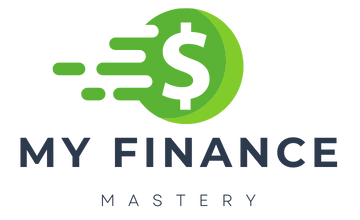A March 2024 announcement from the White House confirms that $45.6 billion in IDR relief for 930,500 borrowers has been approved.
Likewise, regulatory improvements have provided an additional $5.8 billion to 77,700 borrowers enrolled in PSLF, totaling $143.6 billion for 3.96 million borrowers since October 2021.
Here’s how to set yourself up for financial success afterward if you receive student loan forgiveness.
Get accurate refinance options in just 2 minutes with Credible
Compare pre-qualified rates from multiple lenders with no impact to your credit score.
Create a budget
A helpful way to think about your money is the 50/30/20 budgeting framework, where 50% of your income goes toward needs, 30% to wants and 20% to savings and debt repayment beyond minimums.
If you’ve been paying student loan debts, you’ve had some money tied up in the 50% portion, and maybe even the 20% if you’ve been paying extra on top of your minimums.
If you don’t already have a budget, now’s a good time to create one. You can use the 50/30/20 framework to help decide where you can apply those student debt funds now that your loan has been forgiven.
Do you need to put any of that extra money toward essentials? Next consider your 20% budget category and see if it makes sense to increase savings or expedite other debt payoffs. After that, you could think about applying extra funds to the 30% category of wants for things like vacations.
Build an emergency savings fund
As part of increasing those savings, start by taking those first few payments and allocating them to a separate account earmarked specifically for emergencies. Popped a tire on the highway? Need a trip to urgent care? No problem. With a flush emergency fund, the luxury comes from not having to worry when unexpected costs arise.
Since the goal is not to touch these funds unless necessary, try putting your money in a high-yield savings account so that it will continue to grow on its own.
Save for retirement
If you’ve established an emergency fund and don’t yet have a designated retirement account, like a 401K or IRA, now would be a good time to start one. Check with your employer to see if they offer matching contributions for 401Ks. If so, take advantage of that free money and contribute at least enough to receive the full match. If not, your next best move is to contribute to a Roth or traditional IRA.
Pay off toxic debt
Once your emergency fund and retirement savings are launched, consider putting any extra money you had been using to pay your student debt to pay down credit cards, payday loans or other high-interest debt.
Start to invest
Retirement accounts are a great tool to grow your money for the future, but don’t overlook a brokerage account. This type of investment allows you to purchase stocks, bonds and mutual funds. While it doesn’t have the same tax perks as an IRA, a brokerage account offers advantages like no contribution limits or withdrawal penalties.
Buy a house or move
Are you looking to upgrade your housing? Use some of your extra funds for a down payment on a house purchase. Aim for a 20 percent down payment and don’t forget to consider the cost of living if moving to a new area. Alternatively, you may be able to boost the value of your current home by investing in repairs and improvements.
Pursue necessary or elective medical treatment
Have you been putting off health-related tasks due to cost? Now might be the right time to move your student loan funds over to healthcare, as the average family premium continues to increase. In 2023, family premiums went up 7 percent; historically, premiums have increased 47 percent in the last decade, according to an employer health benefits survey by KFF, an independent health policy and research nonprofit.
Make a career change
With no more student loan debt and, hopefully, a degree to stand on, you could consider investing in yourself through a career change. It helps to compare your current compensation package with what else is out there, taking into account perks you enjoy beyond base salary – like cell phone reimbursement or gym membership. Freedom from debt may also free up space to start a small business, if that is something you aspire to.
Buy a car
Whether needing more reliable transportation or simply wanting an upgrade from your current wheels, no student loan payments could mean you have an opportunity to save cash for a new or used car.
Take a vacation
When debt reigns over your budget, dreaming of a vacation can be just that – a dream. But without debt payments, you may have extra money now to book that flight you’ve been dreaming of or take off on a road trip.









